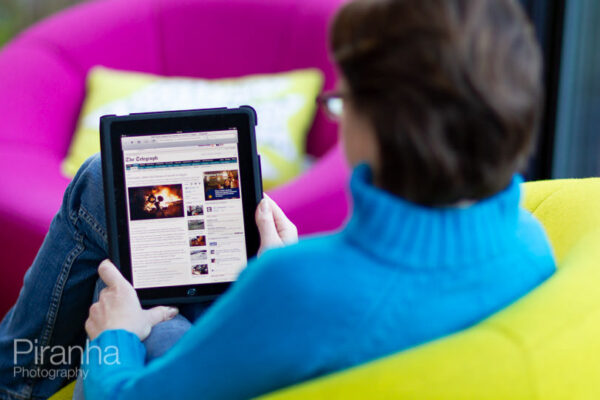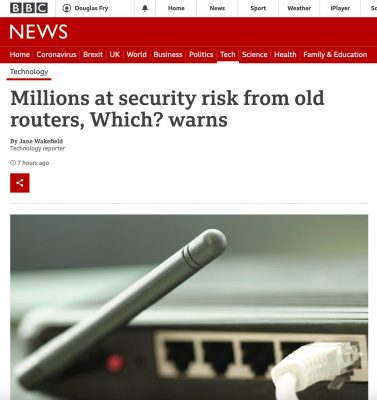
The Danger of Home Routers Supplied by Broadband Providers
Home router security can be extremely poor, particularly when they have been provided by the broadband suppliers.
Home broadband routers, the ones provided by your broadband suppliers are generally built to a price not a standard, then made and handed out free by the million. So, these routers pose a security risk right from the moment you switch it on. Some are so vulnerable to attack that they should be immediately thrown out. Many have not released firmware updates since launch or notified the owner that one is necessary.
There is an in-depth article here that goes into just how vulnerable the humble home router is – Tom’s Guide on Home Router Security
Once someone has broken in through your router they can spy on you, your equipment in the house and take over poorly configured computers. A more commercial router offers a much more robust set of security features, with the added bonus of speed and throughput stability.

Keeping Up-to-Date for Home Router Security Reasons
Routers are basic computers and need to be kept up-to-date, 6 months is a long time in IT let alone a year, two years or more that some issue updates. The convenient UPnP feature that makes life easy when connecting home devices should be disabled too, it is not considered fit for purpose.
There are a number of basic security measures that can be taken, if you’d rather not buy a new router. Firstly, change the login username and password to the router itself to something complicated. The username and certainly the password look complex (printed usually on the bottom of supplied routers) but all have a similar structure and pattern. I wonder if there isn’t a comprehensive list of all this data held somewhere in the country of manufacture, which is invariably China, which is a whole other discussion.
Then change the WiFi broadcast name or SSID as it is known, its usually associated to the service supplier you are with and includes ‘BT’ or ‘SKY’ for example. Change the name to something easier to relate to a family member and definitely change the password. The password should be complex but easy to spell out to someone so ‘æ≥sf7(&^^*””dw’ would be fantastic but too hard to type in with each new device, but ‘hampshire:seaside:bicycle8’ can be spoken easily yet still complex.

Buying a New Router
It may be in your best interests to buy a new router. Routers are not particularly expensive devices but do provide a vital gateway and singular point of vulnerability to the wider Internet from your home. A secure router is a reliable way of protecting your family from the 24/7 nature of virus’s, trojans, hackers and bots. Routers can also filter content for kids WiFi, analyse the data throughput and make provision for everyone in the house that includes a work Zoom or Voice over IP call, kids doing school work and others watching videos or YouTube, without stuttering or frozen video frames.
I have worked with many types of router and networks from many manufacturers including Draytek, TP-Link, Netgear and Apple, but I keep coming back to Ubiquiti for their security, speed and reliability. They can be remotely managed and their firmware is updated very regularly which is reassuring as many don’t do this.
Update on 6th May 2021 – BBC Article
Interestingly the BBC has published an article on their website today on exactly this issue. A few months after we publish ours!! discussing how unsafe routers can be. It is important to act on this and at least do the basics. Its worth repeating please change the default login admin password (usually written on the bottom of your home router itself to something else but equally complicated. Passwords need to be complex but easy to remember, so w*fh2″:;2cQ!@£ is a great password but good luck typing that out accurately every time, but how about ‘BBC-nEws-aBout-rOuters-2021’ or something relating to the family ‘We-Have-A-Goldfish-called-Gerald’ – impossible to guess realistically but easily remembered.
Same goes for Wi-fi passwords, no need to stick with the jumble of letters and numbers printed on the bottom of the router. Again, just log in to the router and change the default Wi-fi password to a few letters in a sentence (even better if you include some numbers and capital letters randomly) for example WHAGCG2021 (see the goldfish password above and I just abbreviated it).
